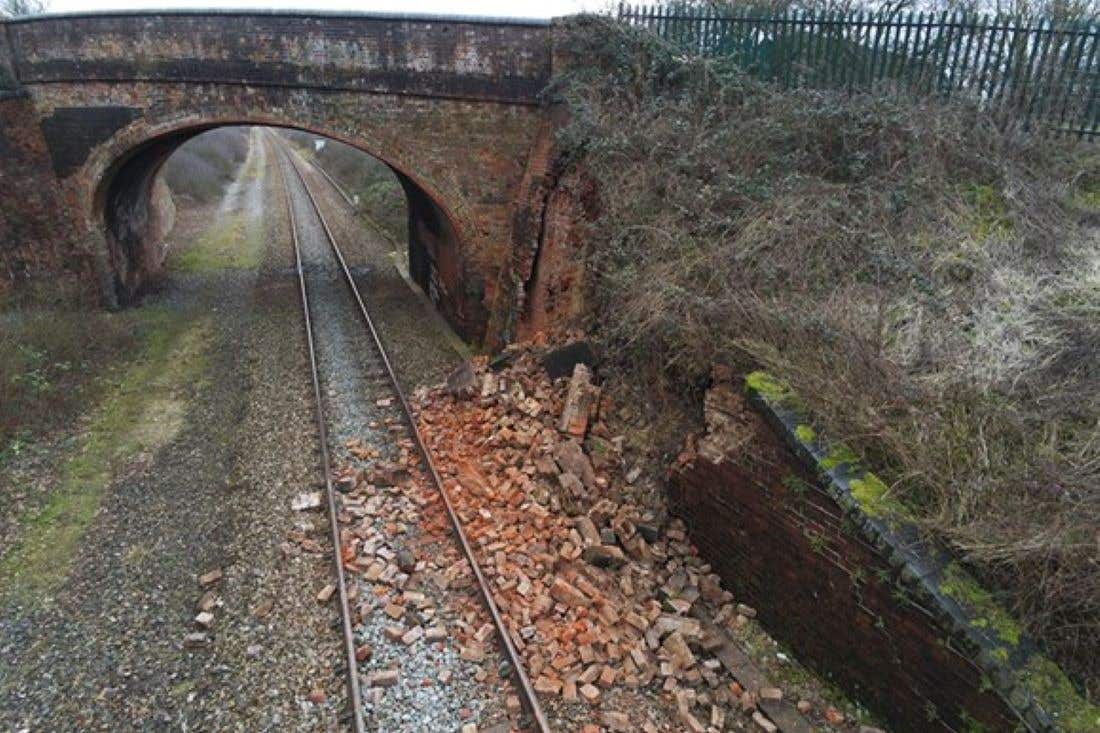Safety recommendations made after train hits bricks from collapsed wall
A Great Western Railway train was travelling at 58mph when the incident happened in Yarnton, Oxfordshire on February 10 last year.

Your support helps us to tell the story
From reproductive rights to climate change to Big Tech, The Independent is on the ground when the story is developing. Whether it's investigating the financials of Elon Musk's pro-Trump PAC or producing our latest documentary, 'The A Word', which shines a light on the American women fighting for reproductive rights, we know how important it is to parse out the facts from the messaging.
At such a critical moment in US history, we need reporters on the ground. Your donation allows us to keep sending journalists to speak to both sides of the story.
The Independent is trusted by Americans across the entire political spectrum. And unlike many other quality news outlets, we choose not to lock Americans out of our reporting and analysis with paywalls. We believe quality journalism should be available to everyone, paid for by those who can afford it.
Your support makes all the difference.Four safety recommendations have been made to Network Rail after a train hit a pile of bricks from a collapsed wall.
A Great Western Railway train was travelling at 58mph when the incident happened in Yarnton, Oxfordshire on February 10 last year, a report by the Rail Accident Investigation Branch (RAIB) said.
Damage to the train from hitting the bricks meant it could not move, so all passengers were evacuated onto a rescue train with the assistance of Oxfordshire Fire and Rescue Service.
The driver, who did not have time to take any action before the collision occurred, reported that the pile of bricks was 10 metres long and 2.5 metres high.
The RAIB said the wall adjacent to the railway collapsed when it was no longer able to carry the load imposed by the embankment it was supporting.
It was “known to be in poor condition” by Network Rail but “effective control measures had not been put in place”, investigators found.
The collapse happened within three weeks of an examining engineer observing that a bulge in the brickwork had increased since a previous inspection.
There is a process for an examiner to directly notify Network Rail if they identify something that requires urgent attention, but this was not thought to be the case in this instance, according to the report.
The RAIB made four recommendations to Network Rail, such as improving the evaluation of structural defects and how it specifies repair work.
A Network Rail spokesperson said: “Safety is our top priority and we’d like to thank passengers for their patience while we worked to repair the bridge in February 2023.
“Following the incident we have assessed the condition of over 200 similarly constructed bridges using existing data, 10 of which received targeted site visits and inspections.
“Repair work to one of those bridges is ongoing.
“We welcome the Rail Accident Investigation Branch’s report into the incident, our teams are working to address the findings and share learning around specific risk of this type of masonry.
“We will continue to work alongside our contractors to implement the four recommendations produced by the RAIB investigation.”